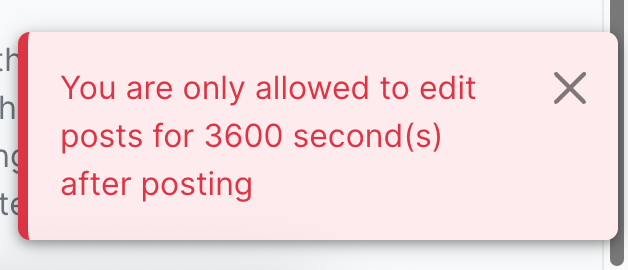Or you could just,  Place a copy of the database backup on the app's volume mayhaps
Place a copy of the database backup on the app's volume mayhaps  Seems the need/request for alternate backup strategies has been out there for a long time (seen a post from 2020 asking for it -> https://forum.cloudron.io/topic/2503/nextcloud-backup-without-data -> kinda left at an unsatisfactory resolve; settling for rsync with some hackarounds). My backup today with an incremental btrfs snapshot just took a couple minutes to transfer to the USB drive - and in fact, I later realized I didn't need it at all! The prior snapshot already existed (as it has to increment from one shot to the next, the previous snapshot remains in place), so I could've just browsed that - even if I lost all my files.
Seems the need/request for alternate backup strategies has been out there for a long time (seen a post from 2020 asking for it -> https://forum.cloudron.io/topic/2503/nextcloud-backup-without-data -> kinda left at an unsatisfactory resolve; settling for rsync with some hackarounds). My backup today with an incremental btrfs snapshot just took a couple minutes to transfer to the USB drive - and in fact, I later realized I didn't need it at all! The prior snapshot already existed (as it has to increment from one shot to the next, the previous snapshot remains in place), so I could've just browsed that - even if I lost all my files.
Regardless, I found my friend in this at the "Terminal" for the Nextcloud app:
PGPASSWORD=${CLOUDRON_POSTGRESQL_PASSWORD} pg_dump -h postgresql -U ${CLOUDRON_POSTGRESQL_USERNAME} -d ${CLOUDRON_POSTGRESQL_DATABASE} -f /your/backup/location/database.sql
Takes just a couple seconds, bang-bang and done, database secured. Would be nice to have a button to "export database" or the like, for alternate backup modes like this. I don't expect to be able to one-click restore it without support for this btrfs mechanism, but I know the data is there - and in case of disaster, there's a lot bigger things to worry about.
The current backup mechanism might work for non-data-centric apps, but for Nextcloud, it's enormous and needs outside-the-box thinking for efficiently managing terabytes of data in backup.
(Not going to use it, but I think I also located the database itself, at /home/yellowtent/platformdata/postgresql - not something to be directly backed-up or manipulated of course )

 If it were, a btrfs snapshot (with "btrfs send | btrfs receive" cloning and management to the external backup drive) would just Thanos-snap it into persistent security... (btrfs is pretty freaking awesome, imo... 10/10 would store life on it)
If it were, a btrfs snapshot (with "btrfs send | btrfs receive" cloning and management to the external backup drive) would just Thanos-snap it into persistent security... (btrfs is pretty freaking awesome, imo... 10/10 would store life on it)

 everything broke.
everything broke.
 ). Less than zero interest in using any cloud server provider.
). Less than zero interest in using any cloud server provider.